Trouble With Freesia Plants: Learn About Freesia Diseases And Pests


Carefree freesias in a garden space are a wonderful addition, but nothing in the plant kingdom is truly without worry. A few common problems plague freesias, but many are simple to deal with if you’re armed with the right knowledge. Let’s learn more about freesia troubles.
Freesia Plant Problems
Graceful and elegant, freesias bring some understated class to the garden border or can create a massively impressive planting all by themselves. Although these iris relatives are generally hardy, there are some diseases and pests that can cause them serious issues. When you have problems with freesias, it’s important to know what you’re dealing with so you can choose an appropriate course of action. Freesia plants are pretty tough and hardly complain, but once in a while you’ll have trouble with freesia plants, so we put together a list of common freesia diseases and freesia pests to help make identification a little easier. Watch out for these common freesia plant problems: Aphids. These soft-bodied sap-sucking insects can cause leaves and flowers to emerge twisted or cause yellowing in sufficient numbers. They’re simple to cure if you’re dedicated to spraying or wiping them away daily until the population is gone. Since ants sometimes farm aphids, it’s also important to place ant baits nearby anytime you’re plagued with aphids. Slugs and snails. These land-based mollusks can wreak havoc on a garden with their nighttime visits, leaving chewed leaves and flowers behind. If you suspect slugs or snails, go out into the garden at night with a flashlight to confirm your suspicion, then handpick as many as you can find. Dunking them into a bucket of soapy water will dispatch the pests quickly. In addition, you may want to place beer traps around the garden in shallow dishes; just make sure you clean them daily. Diatomaceous earth sprinkled around plants may also help. Bacterial soft rot. Caused by a bacterial infection, bacterial soft rot will start out as tiny, water-soaked spots on leaves, stems, or blooms, then enlarge and dry out, leaving a gray, black, or brownish spot behind. In very wet conditions, sick plants may also exude a brownish mass of bacteria. There’s very little you can do once this disease has set in, but reducing moisture around plants with very mild infections can slow the progression. Generally, it’s best to discard or destroy infected plants to prevent the bacteria from spreading. Fusarium wilt. Among the most frustrating garden diseases, Fusarium wilt is incurable once it has started. This fungal pathogen lies dormant in the soil, waiting for its chance to infect plants. When conditions are too wet or plants are overfertilized, you may notice your freesia begin to wilt despite adequate care. The yellow leaves and general decline that follows will usually end in death. Improve your garden drainage, solarize the soil, and try again next year – you’ll have much better luck. Iris leaf spot. Tiny, yellow to green water-soaked lesions can be an early sign of iris leaf spot, but it’s not long before they enlarge to about ¼ inch (6 mm.). Spots appear more aggressively once the plants have bloomed, often merging into bigger irregular areas. They can usually be kept in check by moving your freesias to a better draining site, removing all spent leaves at the end of the season, as well as when you’re dividing clumps. You can also remove infected tissue when it appears to reduce the number of active spores.
Gardening tips, videos, info and more delivered right to your inbox!
Sign up for the Gardening Know How newsletter today and receive a free download of our most popular eBook "How to Grow Delicious Tomatoes."

Kristi Waterworth was a regular contributor to Gardening Know How for many years, answering countless queries on plant pests and diseases.
-
 Clever Vertical Vegetable Garden Ideas For Small Spaces – 7 Ways To Save Space
Clever Vertical Vegetable Garden Ideas For Small Spaces – 7 Ways To Save SpaceShort on garden space? Learn some vegetable garden ideas for small spaces that are fun and easy.
By Mary Ellen Ellis
-
 26 Different Types Of Orchids – With Pictures & Information
26 Different Types Of Orchids – With Pictures & InformationDiscover stunning orchid types to grow in your home and garden – from easy beginner varieties to rare and exotic species that are the preserve of experts.
By Melanie Griffiths
-
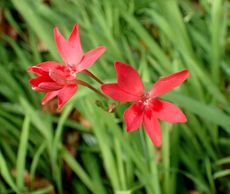 False Freesia Plant Care – Information On Planting False Freesia Corms
False Freesia Plant Care – Information On Planting False Freesia CormsIf you like the look of freesia flowers but wish you could find something similar that wasn't quite so tall, you're in luck! False freesia plants can add a bright splash of red to the garden. Its shorter stature makes it ideal too. Learn how to grow false freesia here.
By Laura Miller
-
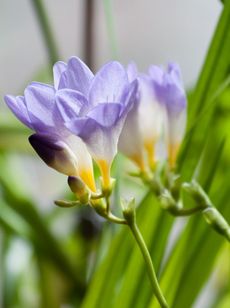 Collecting Freesia Seeds : Learn How To Harvest Freesia Seeds
Collecting Freesia Seeds : Learn How To Harvest Freesia SeedsFreesia can be started with seed. Just be aware, seed may not give a plant that is true to the parent, and it may take several years before you see the first flowers. However, gathering seeds from freesia is easy. Learn how to harvest freesia seeds here.
By Bonnie L. Grant
-
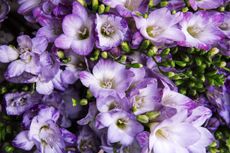 No Flowers On A Freesia: How To Get Blooms On Freesia Plants
No Flowers On A Freesia: How To Get Blooms On Freesia PlantsWhen a freesia won't bloom, it can be frustrating but there are several possible reasons for this, and many of them can be easily corrected. Find tips in this article on how to get blooms on freesia so you can get on your way to growing these scented beauties.
By Bonnie L. Grant
-
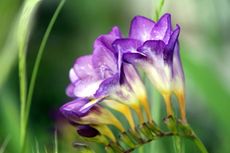 Caring For Freesias: Guide To Freesia Care In The Garden
Caring For Freesias: Guide To Freesia Care In The GardenIn order to properly grow freesia in the garden, it is important to mimic its native habitat. If you're looking for a long lasting flower for a cutting garden, click the following article to learn about freesia growing requirements.
By Darcy Larum
-
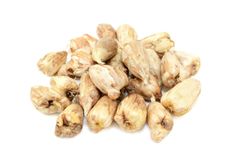 Propagating Freesias: Methods For Starting Or Dividing Freesia Plants
Propagating Freesias: Methods For Starting Or Dividing Freesia PlantsFreesias are beautiful, fragrant flowering plants that have a well deserved place in plenty of gardens. But what could be better than one freesia plant? Lots of freesia plants, of course! Learn more about how to propagate a freesia in this article.
By Liz Baessler
-
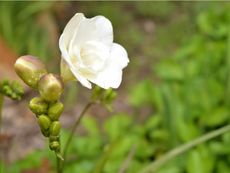 Caring For Forced Freesias – How To Force Freesia Bulbs
Caring For Forced Freesias – How To Force Freesia BulbsCan you force freesia bulbs to bloom indoors? Yes you can! Click here to learn how to make the process a breeze.
By Bonnie L. Grant
-
 Freesia Container Care: How To Grow Freesia Bulbs In Pots
Freesia Container Care: How To Grow Freesia Bulbs In PotsFreesias are ideal for gardens and flower arrangements, but they're also very well suited to being grown in containers. Click on the following article to learn more about how to grow freesia bulbs in pots.
By Liz Baessler
-
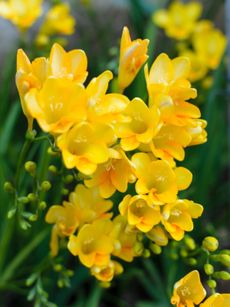 Freesia Bulb Plant: When And How To Plant A Freesia Corm
Freesia Bulb Plant: When And How To Plant A Freesia CormA wide range of colors and an alluring floral fragrance make freesia hard to resist. The freesia bulb plant is easy to force indoors on sunny windowsills, or plant them in the garden. This article has more info.
By Jackie Carroll